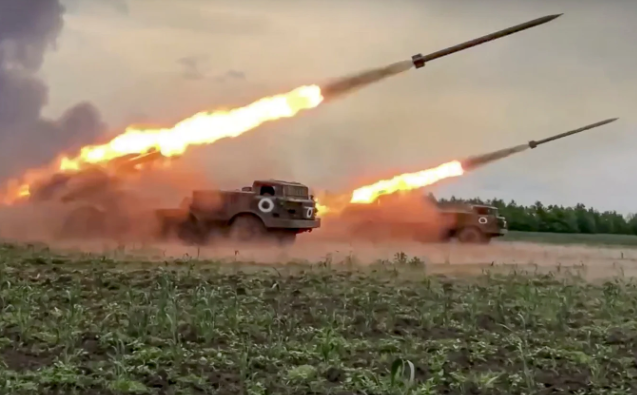When the UK declared a company of Challenger 2 tanks would be deployed to the besieged country in January, it became the first country to provide Ukraine with contemporary tanks. It has now come to light that Britain also provides the depleted uranium shells used in the tanks’ weapons. What is the truth about this contentious ammunition, albeit Russia is protesting that the battle is escalating?
On January 16, British Defence Secretary Ben Wallace stated that the centerpiece of the most recent UK military aid to Ukraine would be 14 Challenger 2 main battle tanks. The ammunition for the tanks’ main guns has also arrived along with the tanks themselves. The use of depleted uranium (DU) penetrators in the ammunition was acknowledged by the British government on March 20.
Ukrainian soldiers have been filmed alongside depleted uranium ammunition that Britain is supplying to their country for the fight against Russia.
— Mats Nilsson (@mazzenilsson) March 31, 2023
The footage is contained in a documentary the UK Ministry of Defence (MoD) released yesterday as Ukrainian https://t.co/hBe5SVqIcu…
Anatoly Antonov, Russia’s ambassador to the US, reacted angrily to the news, complaining that the west was crossing “a dangerous line” that might result in nuclear conflict.
The allegations of Antonov were swiftly dismissed by British and US officials who noted that DU has nothing to do with nuclear weapons. Depleted uranium is used to build these weapons, which are made from stable (non-radioactive) isotopes of uranium, primarily U-238, that are removed during the enrichment process needed to create nuclear fuel or weapons-grade uranium.
Nuclear weapons contain uranium that is at least 85% radioactive U-235 while DU has a U-235 content of less than 0.35 percent. The normal 125mm 3BM59 shell fired by Russian tanks is also constructed of DU, notwithstanding Antonov’s complaints about this “escalation.” It is used in anti-tank shells because it is exceedingly hard and dense, meaning it can penetrate through strong armor.
The tungsten alloy penetrator used in the L28A1 round for its 120mm cannon is no longer manufactured. The manufacture of ammunition for the outdated cannons has halted because the British Army intends to replace the guns on its own Challenger 2s. This indicates that Britain intends to retain the most recent ammunition, thus Ukraine will receive the more antiquated L26A1 and L27A1 shells with DU tips.
It’s not an escalation because Russia has been using DU munitions in Ukraine since the beginning of the conflict. And if Russia is so concerned about the damage DU shells could bring to its tanks and their men, “they could just take them across the border back into Russia,” according to US national security spokesperson John Kirby.








